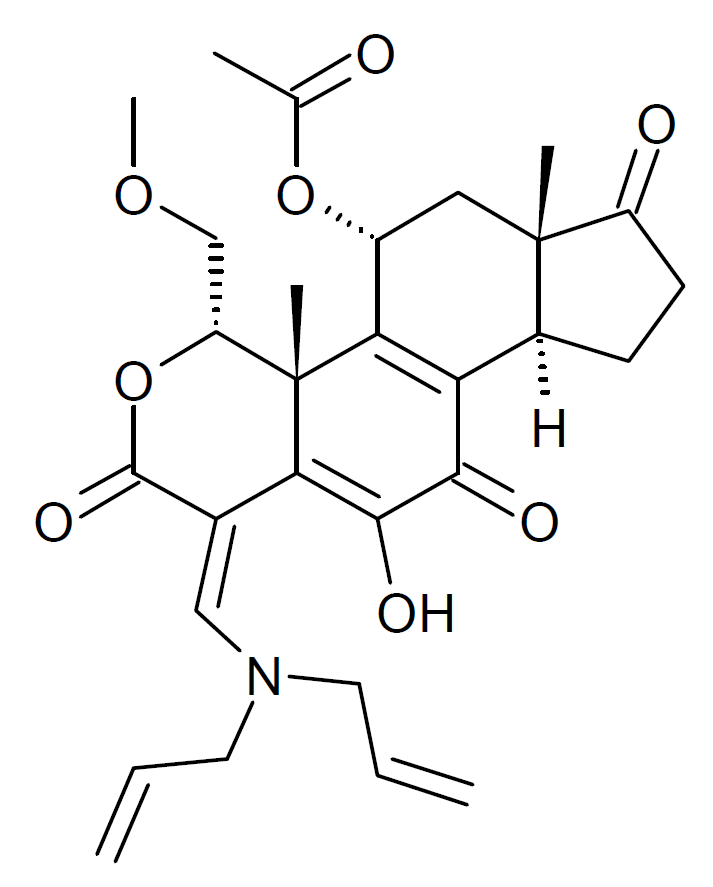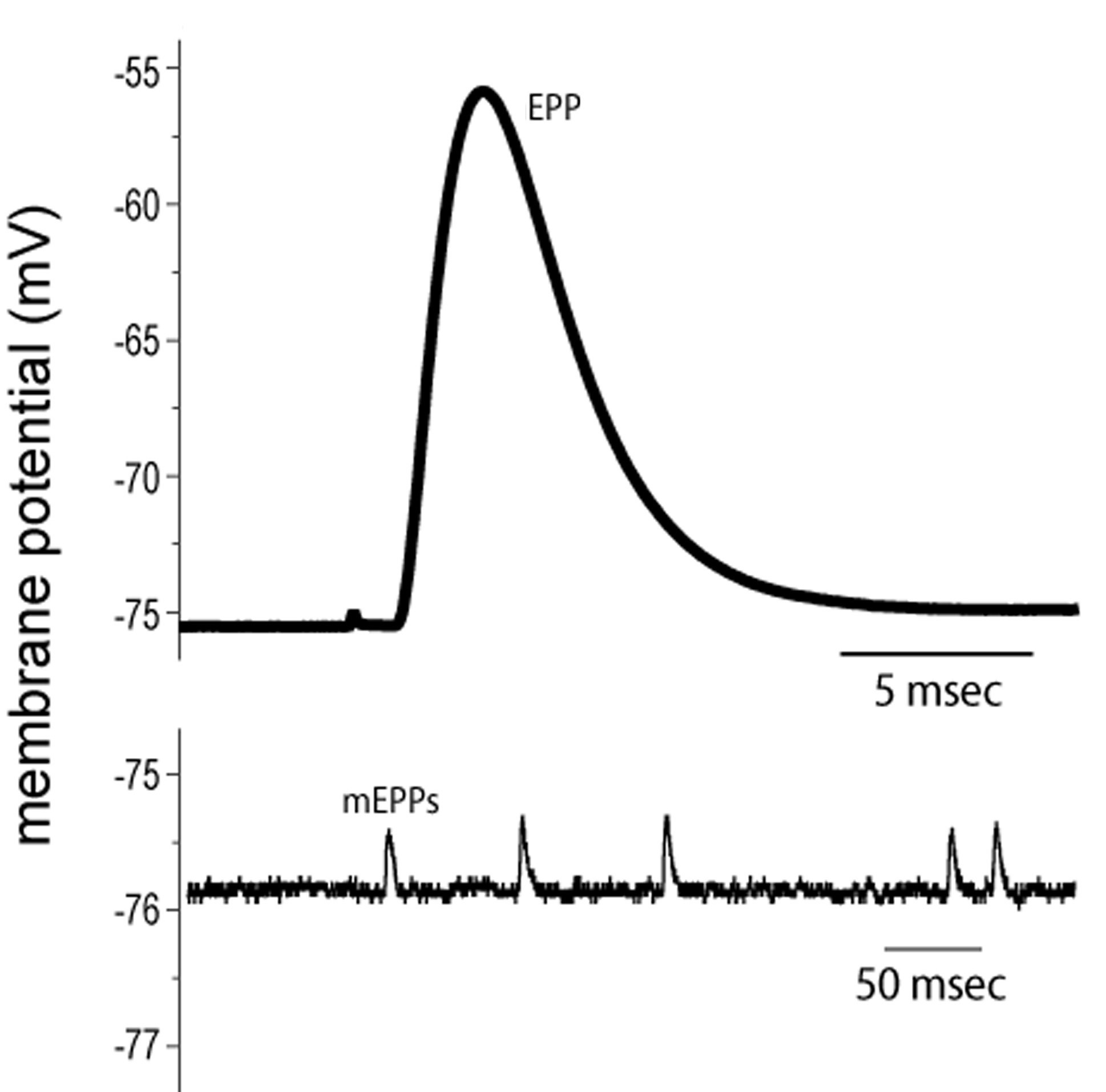|
LY294002
LY294002 is a morpholine-containing chemical compound that is a potent inhibitor of numerous proteins, and a strong inhibitor of phosphoinositide 3-kinases (PI3Ks). It is generally considered a non-selective research tool, and should not be used for experiments aiming to target PI3K uniquely. Two of these are the proto-oncogene serine/threonine-protein kinase (PIM1) and the phosphatidylinositol-4,5-bisphosphate 3-kinase P110 gamma, catalytic subunit gamma isoform. With an IC50 of 1.4 μM it is somewhat less potent than wortmannin, another well-known PI3 kinase inhibitor. However, LY294002 is a reversible inhibitor of PI3K whereas wortmannin acts irreversibly. Application of LY294002 causes a substantial acceleration of MEPP frequency (150 μM) at the frog neuromuscular junction through a mechanism that is independent of intraterminal calcium. LY294002 causes the release of MEPPs through a perturbation of synaptotagmin function. LY294002 is also a BET inhibitor (e.g. of BRD2, ... [...More Info...] [...Related Items...] OR: [Wikipedia] [Google] [Baidu] |
Phosphoinositide 3-kinase
Phosphoinositide 3-kinases (PI3Ks), also called phosphatidylinositol 3-kinases, are a family of enzymes involved in cellular functions such as cell growth, proliferation, differentiation, motility, survival and intracellular trafficking, which in turn are involved in cancer. PI3Ks are a family of related intracellular signal transducer enzymes capable of phosphorylating the 3 position hydroxyl group of the inositol ring of phosphatidylinositol (PtdIns). The pathway, with oncogene PIK3CA and tumor suppressor gene PTEN, is implicated in the sensitivity of cancer tumors to insulin and IGF1, and in calorie restriction. Discovery The discovery of PI3Ks by Lewis Cantley and colleagues began with their identification of a previously unknown phosphoinositide kinase associated with the polyoma middle T protein. They observed unique substrate specificity and chromatographic properties of the products of the lipid kinase, leading to the discovery that this phosphoinositide kinase ha ... [...More Info...] [...Related Items...] OR: [Wikipedia] [Google] [Baidu] |
PI3 Kinase Inhibitor
Phosphoinositide 3-kinase inhibitors (PI3K inhibitors) are a class of medical drugs that are mainly used to treat advanced cancers. They function by inhibiting one or more of the phosphoinositide 3-kinase (PI3K) enzymes, which are part of the PI3K/AKT/mTOR pathway. This signal pathway regulates cellular functions such as growth and survival. It is strictly regulated in healthy cells, but is always active in many cancer cells, allowing the cancer cells to better survive and multiply. PI3K inhibitors block the PI3K/AKT/mTOR pathway and thus slow down cancer growth. They are examples of a targeted therapy. While PI3K inhibitors are an effective treatment, they can have very severe side effects and are therefore only used if other treatments have failed or are not suitable. After PI3K inhibitors had been under investigation as anti-cancer drugs for several years, the first one to be approved for treatment in clinical practice was idelalisib in 2014. Several others followed, and even ... [...More Info...] [...Related Items...] OR: [Wikipedia] [Google] [Baidu] |
BET Inhibitor
BET inhibitors are a class of drugs that reversibly bind the bromodomains of Bromodomain and Extra-Terminal motif (BET) proteins BRD2, BRD3, BRD4, and BRDT, and prevent protein-protein interaction between BET proteins and acetylated histones and transcription factors. Discovery and development Thienodiazepine BET inhibitors were discovered by scientists at Yoshitomi Pharmaceuticals (now Mitsubishi Tanabe Pharma) in the early 1990s, and their potential both as anti-inflammatories and anti-cancer agents noted. However, these molecules remained largely unknown until 2010 when both the use of JQ1 in NUT midline carcinoma and of I-BET 762 in sepsis were published. Since this time a number of molecules have been described that are capable of targeting BET bromodomains. BET inhibitors have been described that are able to discriminate between the first and second bromodomains of BET proteins (BD1 vs BD2). However, no BET inhibitor has yet been described that can reliably distinguish ... [...More Info...] [...Related Items...] OR: [Wikipedia] [Google] [Baidu] |
Wortmannin
Wortmannin, a steroid metabolite of the fungi ''Penicillium funiculosum'', '' Talaromyces wortmannii'', is a non-specific, covalent inhibitor of phosphoinositide 3-kinases (PI3Ks). It has an ''in vitro'' inhibitory concentration (''IC''50) of around 5 nM, making it a more potent inhibitor than LY294002, another commonly used PI3K inhibitor. It displays a similar potency ''in vitro'' for the class I, II, and III PI3K members although it can also inhibit other PI3K-related enzymes such as mTOR, DNA-PKcs, some phosphatidylinositol 4-kinases, myosin light chain kinase (MLCK) and mitogen-activated protein kinase (MAPK) at high concentrations Wortmannin has also been reported to inhibit members of the polo-like kinase family with ''IC''50 in the same range as for PI3K. The half-life of wortmannin in tissue culture is about 10 minutes due to the presence of the highly reactive C20 carbon that is also responsible for its ability to covalently inactivate PI3K. Wortmannin is a co ... [...More Info...] [...Related Items...] OR: [Wikipedia] [Google] [Baidu] |
Morpholine
Morpholine is an organic chemical compound having the chemical formula O( C H2CH2)2 NH. This heterocycle features both amine and ether functional groups. Because of the amine, morpholine is a base; its conjugate acid is called morpholinium. For example, treating morpholine with hydrochloric acid makes the salt morpholinium chloride. It is a colorless liquid with a weak, ammonia- or fish-like odor. The naming of morpholine is attributed to Ludwig Knorr, who incorrectly believed it to be part of the structure of morphine. Production Morpholine is often produced industrially by the dehydration of diethanolamine with sulfuric acid: : Uses Industrial applications Morpholine is a common additive, in parts per million concentrations, for pH adjustment in both fossil fuel and nuclear power plant steam systems. Morpholine is used because its volatility is about the same as water, so once it is added to the water, its concentration becomes distributed rather evenly in both the water ... [...More Info...] [...Related Items...] OR: [Wikipedia] [Google] [Baidu] |
PIM1
Proto-oncogene serine/threonine-protein kinase Pim-1 is an enzyme that in humans is encoded by the ''PIM1'' gene. Pim-1 is a proto-oncogene which encodes for the serine/threonine kinase of the same name. The pim-1 oncogene was first described in relation to murine T-cell lymphomas, as it was the locus most frequently activated by the Moloney murine leukemia virus. Subsequently, the oncogene has been implicated in multiple human cancers, including prostate cancer, acute myeloid leukemia and other hematopoietic malignancies. Primarily expressed in spleen, thymus, bone marrow, prostate, oral epithelial, hippocampus and fetal liver cells, Pim-1 has also been found to be highly expressed in cell cultures isolated from human tumors. Pim-1 is mainly involved in cell cycle progression, apoptosis and transcriptional activation, as well as more general signal transduction pathways. Pim-1's role in oncogenic signalling has led to it becoming a widely studied target in cancer research, with ... [...More Info...] [...Related Items...] OR: [Wikipedia] [Google] [Baidu] |
Phosphatidylinositol-4,5-bisphosphate 3-kinase
In enzymology, a phosphatidylinositol-4,5-bisphosphate 3-kinase () is an enzyme that catalyzes the chemical reaction: :ATP + 1-phosphatidyl-1D-myo-inositol 4,5-bisphosphate \rightleftharpoons ADP + 1-phosphatidyl-1D-myo-inositol 3,4,5-trisphosphate Thus, the two substrates of this enzyme are ATP and 1-phosphatidyl-1D-myo-inositol 4,5-bisphosphate, whereas its two products are ADP and 1-phosphatidyl-1D-myo-inositol 3,4,5-trisphosphate. This enzyme belongs to the family of transferases, specifically those transferring phosphorus-containing groups (phosphotransferases) with an alcohol group as acceptor. The systematic name of this enzyme class is ATP:1-phosphatidyl-1D-myo-inositol-4,5-bisphosphate 3-phosphotransferase. This enzyme is also called type I phosphoinositide 3-kinase. This enzyme participates in 29 metabolic pathways: inositol phosphate metabolism, erbb signaling pathway, phosphatidylinositol signaling system, mtor signaling pathway, apoptosis, VEGF signalin ... [...More Info...] [...Related Items...] OR: [Wikipedia] [Google] [Baidu] |
IC50
The half maximal inhibitory concentration (IC50) is a measure of the potency of a substance in inhibiting a specific biological or biochemical function. IC50 is a quantitative measure that indicates how much of a particular inhibitory substance (e.g. drug) is needed to inhibit, ''in vitro'', a given biological process or biological component by 50%. The biological component could be an enzyme, cell, cell receptor or microorganism. IC50 values are typically expressed as molar concentration. IC50 is commonly used as a measure of antagonist drug potency in pharmacological research. IC50 is comparable to other measures of potency, such as EC50 for excitatory drugs. EC50 represents the dose or plasma concentration required for obtaining 50% of a maximum effect ''in vivo''. IC50 can be determined with functional assays or with competition binding assays. Sometimes, IC50 values are converted to the pIC50 scale. :\ce = -\log_ \ce Due to the minus sign, higher values of pIC50 in ... [...More Info...] [...Related Items...] OR: [Wikipedia] [Google] [Baidu] |
MEPP
End plate potentials (EPPs) are the voltages which cause depolarization of skeletal muscle fibers caused by neurotransmitters binding to the postsynaptic membrane in the neuromuscular junction. They are called "end plates" because the postsynaptic terminals of muscle fibers have a large, saucer-like appearance. When an action potential reaches the axon terminal of a motor neuron, vesicles carrying neurotransmitters (mostly acetylcholine) are exocytosed and the contents are released into the neuromuscular junction. These neurotransmitters bind to receptors on the postsynaptic membrane and lead to its depolarization. In the absence of an action potential, acetylcholine vesicles spontaneously leak into the neuromuscular junction and cause very small depolarizations in the postsynaptic membrane. This small response (~0.4mV) is called a miniature end plate potential (MEPP) and is generated by one acetylcholine-containing vesicle. It represents the smallest possible depolarization w ... [...More Info...] [...Related Items...] OR: [Wikipedia] [Google] [Baidu] |
Quercetin
Quercetin is a plant flavonol from the flavonoid group of polyphenols. It is found in many fruits, vegetables, leaves, seeds, and grains; capers, red onions, and kale are common foods containing appreciable amounts of it. It has a bitter flavor and is used as an ingredient in dietary supplements, beverages, and foods. Occurrence Quercetin is a flavonoid widely distributed in nature. The name has been used since 1857, and is derived from ''quercetum'' (oak forest), after the oak genus ''Quercus''. It is a naturally occurring polar auxin transport inhibitor. Quercetin is one of the most abundant dietary flavonoids, with an average daily consumption of 25–50 milligrams. In red onions, higher concentrations of quercetin occur in the outermost rings and in the part closest to the root, the latter being the part of the plant with the highest concentration. One study found that organically grown tomatoes had 79% more quercetin than non-organically grown fruit. Quercetin is pres ... [...More Info...] [...Related Items...] OR: [Wikipedia] [Google] [Baidu] |
Hepatitis C Virus
The hepatitis C virus (HCV) is a small (55–65 nm in size), enveloped, positive-sense single-stranded RNA virus of the family '' Flaviviridae''. The hepatitis C virus is the cause of hepatitis C and some cancers such as liver cancer (hepatocellular carcinoma, abbreviated HCC) and lymphomas in humans. Taxonomy The hepatitis C virus belongs to the genus ''Hepacivirus'', a member of the family '' Flaviviridae''. Before 2011, it was considered to be the only member of this genus. However a member of this genus has been discovered in dogs: canine hepacivirus. There is also at least one virus in this genus that infects horses. Several additional viruses in the genus have been described in bats and rodents. Structure The hepatitis C virus particle consists of a lipid membrane envelope that is 55 to 65 nm in diameter. Two viral envelope glycoproteins, E1 and E2, are embedded in the lipid envelope. They take part in viral attachment and entry into the cell. Within the env ... [...More Info...] [...Related Items...] OR: [Wikipedia] [Google] [Baidu] |




